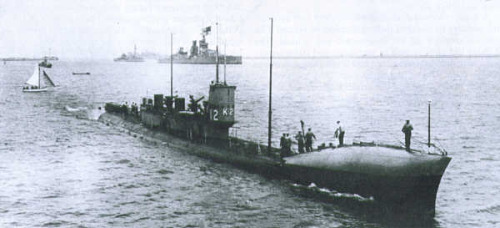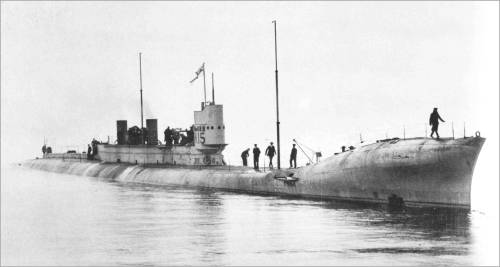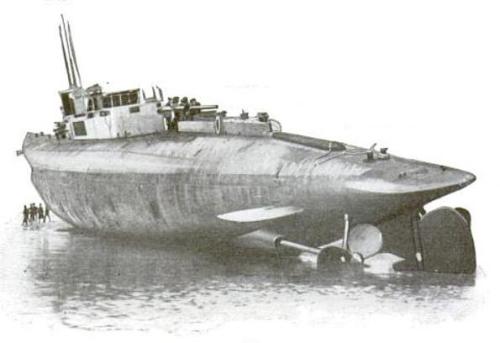peashooter85:The Bad British K-Subs of World War I,The death and destruction caused by German U-Boat
peashooter85:The Bad British K-Subs of World War I,The death and destruction caused by German U-Boats during World War I inspired the British Royal Navy to attempt to commission their own submarine fleet. Not only did the Brits want to match the German U-Boats but they wanted to outperform them, an ambitious goal indeed. Among the most important of specifications was the goal of being able to outrun U-Boats by attaining a cruising speed of 24 knots. Unfortunately, the diesel engines available at the time could not quite make 24 knots. As a result, the British adopted a design created in 1913 which utilized a powerful stream engine. Yes, that’s right, the British created a submarine which used steam engines! The oil fired steam engines were massive, taking up most of the submarine’s space as well as the oil tanks. As a result, the submarine itself was massive as well, not to mention unbalanced. Managing the ballast needed to dive properly was tricky, and even the slightest error could cause the sub to dive out of control. Overall, the massive sub was 103 meters long and displaced 1,980 tons when when surfaced. The most conspicuous feature of the K-sub were its two smokestacks located behind the conning tower. In addition four large air intake holes provided oxygen for the furnaces. The use of a steam engine was an incredible liability for the K-sub. Rather than making fast emergency dives like a U-Boat, the K-sub required a lengthy dive procedure which involved sealing the smokestacks, sealing the air intake holes, and cooling off the furnace and boilers. Any mistake in this procedure could lead to sinking, explosion, and the creation of deadly hot gasses within the sub. Incredibly the sub itself was longer than its maximum dive depth, thus diving had to be done slowly and at a shallow angle. In addition, the steam engine and furnaces were very hot, making the sub a living hell for the poor sailors who crewed it. Maneuverability was poor, and most embarrassingly any large waves or droughts could cause water to enter the smoke stacks, snuffing out the fires in the furnaces. Due to the numerous problems inherent in the K-Class design, British submariners nicknamed them “kalamity” class submarines. They were also known as steel coffins. 18 K-Class submarines were built, of which 6 sank due to accidents. K13 sank when an air intake port failed to close during diving. K1 collided with K4 while on patrol of the coast of Denmark, resulting in it being scuttled.. K5 disappeared after diving, taking all crew with her. K15 sank while in dock at Portsmith, it’s many funnels and hatches flooded. K4 ran aground on Walney Island, off the coast of Northwestern England. It remained there for some time. K16 and K12 had close calls when they lost control of a dive and sank to the bottom, but was able to surface safely. K3 likewise had an uncontrolled dive, accidentally setting a new depth record of 266 feet.The most embarrassing accident occurred in 1918 during an event called the Battle of May Island. During the incident, the cruiser HMS Fearless was being escorted by a squadron K-Subs, with the subs taking the lead. During the patrol one K-Sub lost control and crashed into another, causing a domino like chain reaction where the other subs crashed into one another. In the midst of the accident, the cruiser was unable to stop, thus crashing into the mix and literally slicing two K-Subs in half. The accident caused the sinking of two subs, the damaging of two others, and the loss of 104 crewman.The only combat actions attributed to the K-Sub was when K7 attacked the U-Boat U-95 on June 16th, 1917. K7 fired five torpedoes, of which only one hit but failed to explode.After World War I most K-Subs were decommissioned as per agreements made with various post World War I arms treaties. A handful remained in service throughout the 20’s. The last K-Class sub was decommissioned in 1931. -- source link


